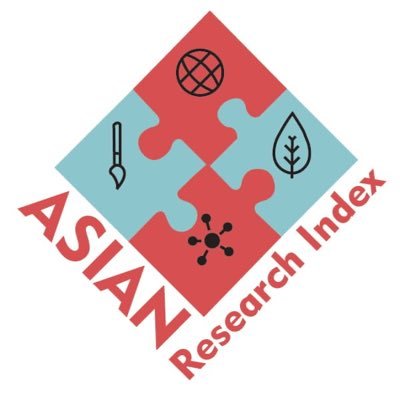Prevalence of Musculoskeletal Disorders and Association with Depression Among Supportive Staff at Private Sector Universities of Peshawar
DOI:
https://doi.org/10.55735/9t25pz75Keywords:
Depression, Musculoskeletal disorders, Prevalence, Supportive staffAbstract
Background: Musculoskeletal pain and depression often coexist; depression is typified by a persistent sense of sadness, a lack of interest, and the possibility of functional impairment. Due to physical strain and demanding work environments, supportive staff who are crucial to the effectiveness of organizations, frequently experience severe pressures like anxiety, depression, and mental health disorders. Objective: To determine the prevalence of musculoskeletal disorders and their association with depression among supportive staff at private sector universities of Peshawar. Methodology: In this cross-sectional study, data were collected at a single point in time from participants in private sector universities of Peshawar. Male participants aged 18-60 years with at least one year of experience were included, while those with a history of major trauma or psychiatric drug use were excluded. Data were collected using the standardized Nordic Musculoskeletal Questionnaire, which assessed the prevalence and effects of musculoskeletal disorders, and the Patient Health Questionnaire, which measured the severity of depression. Ethical approval was obtained from the Departmental Research Committee of Allied Health Sciences, City University of Science and Information Technology, Peshawar, and informed consent was taken from all participants, guaranteeing confidentiality, voluntary participation, and adherence to ethical principles of beneficence, non-maleficence, and autonomy. Descriptive statistics (frequencies, percentages) and cross-tabulation to explore association, and inferential statistics, including chi-square tests, and logistic regression to assess relationships between musculoskeletal disorders and depression among supportive staff. Results: All participants provided their informed consent, ensuring ethical approval and guaranteeing confidentiality and compliance with ethical standards. According to the results, 19.9% had high musculoskeletal symptoms and 42.2% had moderate symptoms. The prevalence of depression was also noteworthy, with 10.4% reporting moderate depression and 39.8% reporting mild depression. Conclusion: Depression and musculoskeletal symptom severity were found to be statistically significantly correlated (p<0.00). Higher musculoskeletal scores were a predictor of greater depression severity, according to regression analysis.
Downloads
References
1. Khan H, Ghani L, Kousar A, Manzoor Z, Iftikhar K, Mushtaq A. Association of work-related musculoskeletal disorders with depression, anxiety and stress among farmers. Insights-Journal of Health and Rehabilitation 2025; 3(1 (Health & Allied)): 657-64.
2. Alsulaihebi HS, Alsulaihebi AS, Alsaedi ZK, Alsharif SY, Mahamid AW, Babateen OM. Musculoskeletal disorder prevalence and its correlation with stress in medical students: A cross sectional survey. Journal of Family Medicine and Primary Care 2024; 13(4): 1524-9.
https://doi.org/10.4103/jfmpc.jfmpc_1659_23
3. Khan HY, Adnan M, Basit SA, et al. Evaluation of cervical proprioception and its association with disability in neck pain: A cross-sectional study. Indus Journal of Bioscience Research 2025; 3(5): 660-4.
https://doi.org/10.70749/ijbr.v3i5.1424
4. Khan HY, Khan SH, Gillani A, et al. Knowledge, attitudes and beliefs of clinical physiotherapists towards chronic back pain. National Journal of Life and Health Sciences 2024; 3(1): 20-4.
https://doi.org/10.62746/njlhs.v3n1.21
5. Khan HY, Tahir A, Andam G, Huma N, Saleem Z. Forward head posture and its association with tension-type headache among the bankers of Hayatabad Peshawar: A cross-sectional study. National Journal of Life and Health Sciences 2023; 2(1): 19-22.
https://doi.org/10.62746/njlhs.v2n1.13
6. Greggi C, Visconti VV, Albanese M, et al. Work-Related Musculoskeletal Disorders: A Systematic Review and Meta-Analysis. Journal of Clinical Medicine 2024; 13(13): 3964.
https://doi.org/10.3390/jcm13133964
7. Afridi B, Sikander MS, Khan H, Ahmad I. Prevalence of Nonspecific Low Back Pain Among the Long Route Bus Drivers in Peshawar, Khyber Pakhtunkhwa, Pakistan. Rehabilitation Communications 2023; 2(1): 5-11.
https://doi.org/10.55627/rehab.002.01.0214
8. Sikandar MS, Khan HY, Bukhari S, et al. Effectiveness of shoulder glides with rotation in adhesive capsulitis: a randomized controlled trial. Journal of Medical & Health Sciences Review 2025; 2(2).
https://doi.org/10.62019/8s9fbq22
9. Jamialahmadi S, Alemohammad ZB, Sharifian SA, Mehrdad R. The association between insomnia and musculoskeletal problems in employees of an automotive company in Tehran, Iran. Musculoskeletal Science and Practice 2024; 74: 103189.
https://doi.org/10.1016/j.msksp.2024.103189
10. Durrani HI, Rehman M, Khan Y, et al. Frequency of musculoskeletal disorders among dialysis patients with chronic kidney diseases in the Institute of Kidney Diseases, Hayatabad, Peshawar, a cross-sectional study. Journal of Medical & Health Sciences Review 2025; 2(2).
https://doi.org/10.62019/khayw464
11. Shahid F, Sikandar MS, Fayaz H, et al. Prevalence of shoulder pain, disability and its association with neck disability in tennis players: a cross-sectional study. Frontier in Medical and Health Research 2025; 3(6): 119-127.
https://doi.org/10.5281/zenodo.16753917
12. Núñez-Cortés R, Espin A, Pérez-Alenda S, et al. Association between pain coping and symptoms of anxiety and depression, and work absenteeism in people with upper limb musculoskeletal disorders: A systematic review and meta-analysis. Archives of Physical Medicine and Rehabilitation 2024; 105(4): 781-91.
https://doi.org/10.1016/j.apmr.2023.07.003
13. Shinwari NU, Sikander MS, Haider M, Jan SIU, Hassan M, Naz M. Work-related musculoskeletal symptoms and their ergonomic risk factors among surgeons of Peshawar. Insights-Journal of Health and Rehabilitation 2024; 2(2 (Health & Allied)): 166-72.
https://doi.org/10.71000/ijhr93
14. Costa F, Janela D, Molinos M, et al. Impacts of digital care programs for musculoskeletal conditions on depression and work productivity: longitudinal cohort study. Journal of Medical Internet Research 2022; 24(7): e38942.
15. Maharaj S, Lees T, Lal S. Prevalence and Risk Factors of Depression, Anxiety, and Stress in a Cohort of Australian Nurses. International Journal of Environmental Research and Public Health 2018; 16(1): 61.
https://doi.org/10.3390/ijerph16010061
16. Pourmavaddat FA, Pourmaveddat K. The prevalence of certain upper body abnormalities and their association with mental health among female students at Payame Noor University. Health Research 2024; 16(1): 15-24.
https://doi.org/10.22059/sshr.2024.369970.1115
17. Yona T, Weisman A, Gottlieb U, Masharawi Y. High levels of self-reported depressive symptoms among physical therapists and physical therapist students are associated with musculoskeletal pain: a cross-sectional study. Physical Therapy 2022; 102(3): pzab278.
https://doi.org/10.1093/ptj/pzab278
18. Keavy R, Horton R, Al-Dadah O. The prevalence of musculoskeletal presentations in general practice: an epidemiological study. Family Practice 2023; 40(1): 68-74.
https://doi.org/10.1093/fampra/cmac055
19. Klem N-R, Slater H, Rowbotham S, et al. Lived and care experiences of young people with chronic musculoskeletal pain and mental health conditions: a systematic review with qualitative evidence synthesis. Pain 2025; 166(4): 732-54.
https://doi.org/10.1097/j.pain.0000000000003407
20. Zhang Y, ElGhaziri M, Nasuti S, Duffy JF. The comorbidity of musculoskeletal disorders and depression: associations with working conditions among hospital nurses. Workplace Health & Safety 2020; 68(7): 346-54.

Downloads
Published
License
Copyright (c) 2025 The Healer Journal of Physiotherapy and Rehabilitation Sciences

This work is licensed under a Creative Commons Attribution 4.0 International License.














